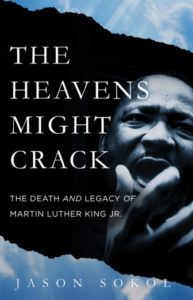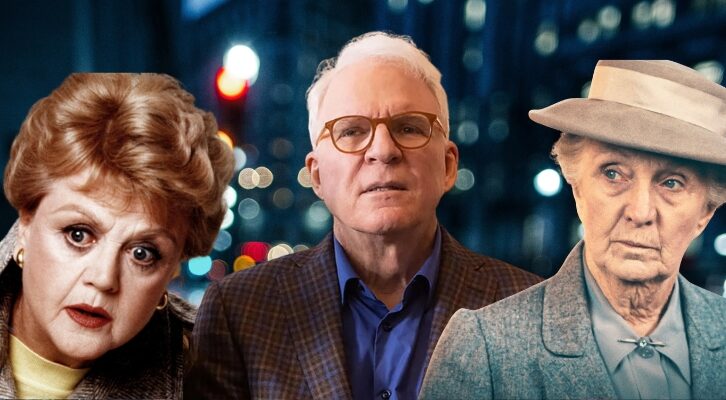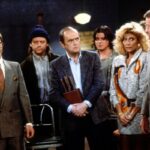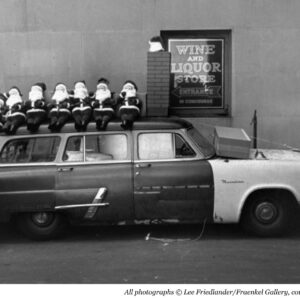
James Baldwin: 'I Did Not Want to Weep for Martin, Tears Seemed Futile'
In Memory of Martin Luther King Jr, a Look Back on His Funeral
On the morning of Martin Luther King Jr.’s funeral, the rest of the country paused for a moment of silence. Many government offices and schools were closed. Stock exchanges took the day off as well, the first time the New York Stock Exchange closed to honor a private citizen. One hundred twenty million Americans tuned in to watch the service on television.
People poured into Atlanta. The city “felt like the center of the universe,” recalled Maria Saporta, an Atlantan who was 12 years old at the time. Newsstands at the airport stocked Life’s commemorative King issue, and raised the price from 35 cents per copy to one dollar. They quickly sold out of all 100,000 copies. The Southern Christian Leadership Conference put out a frantic call for volunteers to assist with the influx of visitors. Atlanta residents opened up their homes. For many whites, it was the first time they had hosted African Americans. Local churches and schools prepared to receive the fatigued travelers. Krispy Kreme donated 150 dozen doughnuts and Coca-Cola contributed 16,000 bottles of soda. Central Presbyterian Church acted as the de facto headquarters. It provided food, blankets, and sheets, and bused visitors to churches and colleges throughout the city. Rows of army cots dotted classrooms and gymnasiums. It seemed every structure in the city held grieving visitors, a mourner in every bed.
James Baldwin traveled to Atlanta by himself. He had last seen King when they both appeared at an event at Carnegie Hall earlier in 1968. Baldwin, the celebrated black writer, bought a new dark suit for that occasion. And he wore it again to King’s funeral.
On the morning of Tuesday, April 9, Baldwin left his Atlanta hotel and walked toward Ebenezer Baptist Church. Throngs of people stretched in every direction. Baldwin squeezed his way closer to the church, inch by inch, until an impenetrable wall of humanity finally stopped him in his tracks. The people “were like rows of poppies,” recalled June Dobbs, a lifelong friend of King’s. Outside the church, Baldwin leaned up against a Cadillac carrying football star Jim Brown, but Brown did not see him. Baldwin gesticulated wildly until someone on the church steps recognized him, pushed toward the Cadillac, and “sort of lifted me over.” He followed his escort into the church and found a seat among the 1,000 souls pressed into Ebenezer. The pew in front of him held a lineup of celebrity entertainers: Marlon Brando, Sammy Davis Jr., Eartha Kitt, and Sidney Poitier. Harry Belafonte sat up front, alongside Coretta Scott King. Ralph Abernathy occupied the pulpit. “The atmosphere was black,” Baldwin wrote, “with a tension indescribable—as though something, perhaps the heavens, perhaps the earth, might crack.”
As the service began, Baldwin tried to keep himself together. “I did not want to weep for Martin, tears seemed futile.” His death was too terrible, the void too deep. “I may also have been afraid, and I could not have been the only one, that if I began to weep I would not be able to stop.”
Abernathy offered a prayer and read from the Old and New Testaments. Harold DeWolf, King’s professor from Boston University, delivered a short tribute. Then the Ebenezer choir sang one of Martin’s favorite hymns, “Softly and Tenderly,” as well as “Where He Leads Me I Will Follow.” Choir member Mary Gurley delivered a breathtaking performance of “My Heavenly Father Watches Over Me.” Jethro English, a church deacon, had sung in the choir for several decades. English noted, “I sang at his wedding to Coretta—and I sang at his parents’ wedding.” But English had trouble during the funeral. “It was hard to sing. There was so much emotion. But we had an obligation to share.” After the choir finished, Martin’s voice filled the church. Coretta played his speech of February 4, in which King had reflected on his funeral wishes. Finally, the pallbearers carried King’s casket toward the door. Abernathy followed the casket, trancelike, chanting psalms. The crowd filed out behind him. When James Baldwin emerged in the sunlight, he noticed the enormity of the spectacle, which he had failed to appreciate on his way in. He saw that masses of people not only lined both sides of the road, but that they occupied every imaginable space. They stood on every rooftop, baking in the Georgia heat. “Every inch of ground, as far as the eye could see, was black with people, and they stood in silence.” They offered a mute testament to King. “It was the silence that undid me,” Baldwin explained. “I started to cry, and I stumbled.” Sammy Davis Jr. grabbed his arm and steadied him for the march ahead.
King’s coffin was loaded into a wagon drawn by mules. King had envisioned for the Poor People’s Campaign a similar scene: impoverished citizens would hitch their wagons and set out for Washington. As Bernard Lafayette put it, the wagon “symbolized what he lived for and what he died for.” The mule-drawn wagon brought King down from the plane of Nobel laureates and the rarefied air of angels. It placed him squarely alongside ordinary black laborers. It highlighted his ties with those whose hands had picked cotton, those who still worked with mules across the rural South, those who cleaned the toilets or carried the trash. They were King’s people.
“The atmosphere was black,” Baldwin wrote, “with a tension indescribable—as though something, perhaps the heavens, perhaps the earth, might crack.”
The idea of the mule-led wagon came from the SCLC’s Hosea Williams. Coretta and the SCLC staff considered many options, but everyone agreed in the end that the wagon was most appropriate. It fit with the specific image of King that Coretta and the SCLC were projecting: of a man in touch with the poor, a leader who toiled for society’s most alienated. Days after King’s death, his closest confidants thus engaged in the shaping of his legacy. Once they decided on a wagon, SCLC members then started to look for the perfect one. “It had to look a certain way,” explained Elizabeth Omilami, the daughter of Hosea Williams. She was 17 years old at the time, home from boarding school to attend the funeral. “It couldn’t be nice, it had to look rugged.” SCLC staffers searched for a working wagon that fit the bill. They eventually found one at an antique shop in Atlanta’s West End. Ed Peek, a farmer from Clayton County, Georgia, agreed to lend two mules.
At noon, the great funeral march began with the clop of the hooves on the street. It would snake for four miles, from Ebenezer to Morehouse College. “When the procession would go by,” mayoral intern Sam Williams remembered, “people would get quiet.” Forty years later, the sound stayed with him—silence broken by the rapping of hooves upon pavement. Kennedys and Rockefellers marched together with tens of thousands of anonymous African Americans. As a Newsweek reporter wrote, the funeral procession featured “the powerful and mighty marching along with a gnarled sharecropper wearing his only oversized Sunday suit.” Princes and paupers alike donned their Sunday best. On the front page of the New York Times, Homer Bigart described it as “one of the strangest corteges ever seen in the land.”
The streets of Atlanta were illuminated in red, white, and black. Blooming red azaleas lined the route as the dogwoods reached their spring peak, painting a bright ivory background behind the march. Of the 150,000 marchers, as many as 140,000 were black. While the funeral demonstrated the powerful link between King and ordinary black people, it also showed the depths of white apathy. The white neighborhoods on the city’s outskirts seemed untouched by the day’s events. In northeast Atlanta, the Lenox Square shopping center buzzed with affluent whites. Though Rich’s department store closed its downtown location for the day, its Lenox Square store welcomed the hordes of Easter shoppers.
While virtually every white American was touched by John F. Kennedy’s assassination in 1963, these shoppers were among the millions of whites who merely noted King’s death and hoped it would not disrupt their everyday lives. In the weeks after King’s assassination, the Emory Center for Research in Social Change conducted a survey of Atlanta residents. Eighty-three percent of African Americans reported strongly emotional reactions to King’s death. Only 42 percent of whites registered such responses. As the Emory social scientists concluded, “White Atlantans simply did not identify with Dr. King; his death to them was simply an event which would not affect the individual lives of white people.” The researchers asked whether King’s death had affected individuals’ attitudes toward racial problems. Fully 84 percent of whites in Atlanta answered “No.” The audience at the Atlanta Symphony may have gasped at the news of King’s death, but for most white Americans, King’s assassination was not a tragedy to wrestle with—much less an event that would affect their lives or their outlook. It was just another inconvenience to navigate.
Senator Robert Kennedy came to this conclusion during the march. Kennedy walked with black activist Charles Evers, whose older brother Medgar had also been assassinated in 1963. Few white people participated in the march, or even stood among the thousands of well-wishers who lined the route. Reporter Jimmy Breslin said to Kennedy, “You’d think even a few of them would come out and just look, even for curiosity.” Kennedy replied, “You’d think so.” Breslin inquired, “Then maybe this thing won’t change anything at all?” “Oh,” said Kennedy, “I don’t think this will mean anything.” Kennedy looked at Evers and asked, “Charles, do you think this will mean anything?” Evers said, “Nothing. Didn’t mean nothing when my brother was killed.” Kennedy answered, “I know.” To so many white Americans, King’s death registered as someone else’s horror. It was a wound inflicted upon another people.
For the African Americans who made the pilgrimage to Atlanta, however, that wound cut deep. One South Carolina man could not quite explain why he had traveled the 200 miles. “It’s just something I felt I had to do. I don’t know exactly why, other than I had a great respect for King.” He was pulled ineluctably to Atlanta. Laurence Smith Jr. viewed such people as the true heroes of the day. Smith, a graduate student in sociology at the University of Kentucky, was already in Atlanta to attend an academic conference. He both participated in the funeral march and analyzed it. He collected his thoughts and drafted a letter to Ralph McGill, publisher of the Atlanta Constitution. Smith focused not on the elected officials, the movie stars, the famous athletes, or the foreign ambassadors. He wrote about the “real dignitaries,” by whom he meant “the people of little known public identity who stood in silent vigil, who march the 30-odd blocks to Morehouse College, who stood, pressed against one another in. . . summer temperature, sharing their collective grief.” He described some of these “real dignitaries” in more detail. They were “the high school girls from Detroit who had sacrificed their money, saved to buy an Easter outfit, in order to ride a bus and to be in Atlanta to pay their respects; they were the plumbers from Stamford, Connecticut, the working girls from Chicago, the seminary student from Philadelphia, the unemployed laborer from Biloxi, the soldier home on leave from Vietnam, the off-duty Atlanta cab-driver, the hotel porter from Augusta.” He included on his list a “weeping white policeman from Cleveland” as well as postal workers from Richmond and schoolteachers from Cleveland. “The sacrifices they made to be there was their mutual gift to Dr. King’s memory.” King had toiled for them. In return, they tolerated every mundane inconvenience in order to make sure the streets of Atlanta would be clogged with mourners.
“While the funeral demonstrated the powerful link between King and ordinary black people, it also showed the depths of white apathy. The white neighborhoods on the city’s outskirts seemed untouched by the day’s events.”
They sang as they walked. They sang “This Little Light of Mine” and “Swing Low, Sweet Chariot.” Dizzy Gillespie sang “Freedom.” Eartha Kitt led a portion of the crowd in “We Shall Overcome,” and Aretha Franklin picked up where she left off. The mules trotted onto the Morehouse College campus shortly after 2:30 in the afternoon. The classic portico of Harkness Hall served as the speakers’ platform. Benjamin Mays, the former president of Morehouse, took his place at the lectern in a rich crimson robe. Next to Mays sat Andrew Young and then Rosa Parks, wearing a black dress with a black straw hat. She sobbed quietly into her handkerchief. Rows of green-cushioned folding chairs were positioned just beneath the platform. Martin Luther King Sr. sat in the front row, looking “alternately bewildered, perturbed, and proud,” according to a Newsweek reporter. Behind the folding chairs, the vast throng of mourners overflowed the Morehouse quad. They climbed onto tree limbs or stood atop parked cars for a better view. Some fainted from the oppressive heat and the suffocating crowd. At one point, a disoriented older woman wandered into an open area in front of the main platform. Nelson Rockefeller rose and ceded his seat to the woman, a former domestic worker. She sat next to Happy Rockefeller and the two women shared a cup of crushed ice. Nelson Rockefeller retreated to the grass and sat down, legs crossed. Mahalia Jackson took the podium and sang “Precious Lord,” the song King had requested in his last moments. Finally, Benjamin Mays gave the eulogy. Mays and King had forged a pact: whichever man passed away first would have his eulogy delivered by the other. Mays stood 35 years older than King. Mays lamented, “I always wanted him to preach mine.” Although King’s family and confidants lived for so long with the prospect of his death, there was a painful awareness that he had died too soon. Cut down at age 39, he was survived by the president of his alma mater, by his father and mother, and by the gray-haired woman who stumbled into a front-row seat.
Abernathy closed the service at 4:15. Jesse Jackson dropped to his knees in front of the coffin, bobbed his head, and wept. Jackson seemed to have released something. Many of the other men remained calm and controlled through the service; now they dissolved in tears as well. The mule train left Morehouse and headed toward South-View Cemetery. African Americans had founded the cemetery in 1886, seeking an alternative to Atlanta’s segregated graveyards. Several lynching victims were buried there, including those who perished in Atlanta’s 1906 race riot. A brief ceremony capped the long day. King was the most recent, and the most famous, among the victims of white violence to be buried in that ground.
Few of the celebrities or politicians made the trek to South-View Cemetery. Some lacked the stamina for the seemingly interminable day of mourning. More to the point, they lacked the commitment. Many political leaders had recently admonished King and denounced the Poor People’s Campaign. After the assassination, they suddenly turned around and offered mealy-mouthed encomiums to King. As the liberal southerner Pat Watters wrote in The Nation, “the outpouring of grief and guilt and bathos after the assassination, coming from such an officialdom, a press, a society. . . had to be called obscene.”
Jesse Jackson felt a similar disgust. He was incensed by the sight of 150,000 mourners in Atlanta. He wondered where they had been in the past weeks, months, and years. “There was a total outpouring of people. My anger was, in part, because—how many people had been with us April 3, fighting for the garbage workers, the Poor People’s Campaign?” To avoid the strike in Memphis, and then just to show up in Atlanta, was an easy salve. “It’s cheap grace to admire a sacrificial person. There were many who admired him but few who followed him.” The elected officials who attended the funeral had engaged in “politically inspired commiseration,” wrote David Levering Lewis in his 1970 biography of King. They had lambasted King for his stance on Vietnam and whipped up revulsion toward him. Their denunciations had “fostered, condoned, or finessed the rising opposition to Martin’s activities during the past three or more years.” On this day, with their hypocrisy barely disguised, they sought photo opportunities under the boiling Georgia sun.
Only one senator or congressman from the South attended the funeral: Georgia’s Fletcher Thompson. The other southern politicians knew how deeply their constituents loathed King, and realized that their own presence at the funeral could become a political liability. (Indeed, Thompson’s constituents assailed him.) A few of them expressed “polite statements of regret” about King’s assassination, as Ralph McGill reported. But they were “privately relieved that Dr. King was no longer alive.” King had long stuck as a thorn in their sides. He confronted, challenged, and discomfited those in power.
Now his voice was stilled.
*
President Lyndon Johnson declined to attend the funeral.
Lady Bird Johnson described the moment when the Johnsons learned of King’s assassination as “one of those frozen moments, as though the bomb had fallen on us.” President Johnson immediately called Coretta Scott King to express his remorse. Then he appeared on television and told the nation, “I am sure that every American of goodwill joins me in mourning the death of this outstanding leader.” In his statement, Johnson said more about the need for peace than about the loss of King. His chief aim was to deter Americans from rioting.
__________________________________

From The Heavens Might Crack. Used with permission of Basic Books. Copyright © 2018 by Jason Sokol.
Jason Sokol
Jason Sokol is the Arthur K. Whitcomb Associate Professor of History at the University of New Hampshire. Sokol is the author of two critically acclaimed books on the history of the civil rights movement, including The Heavens Might Crack. Sokol lives in Newburyport, Massachusetts.



















